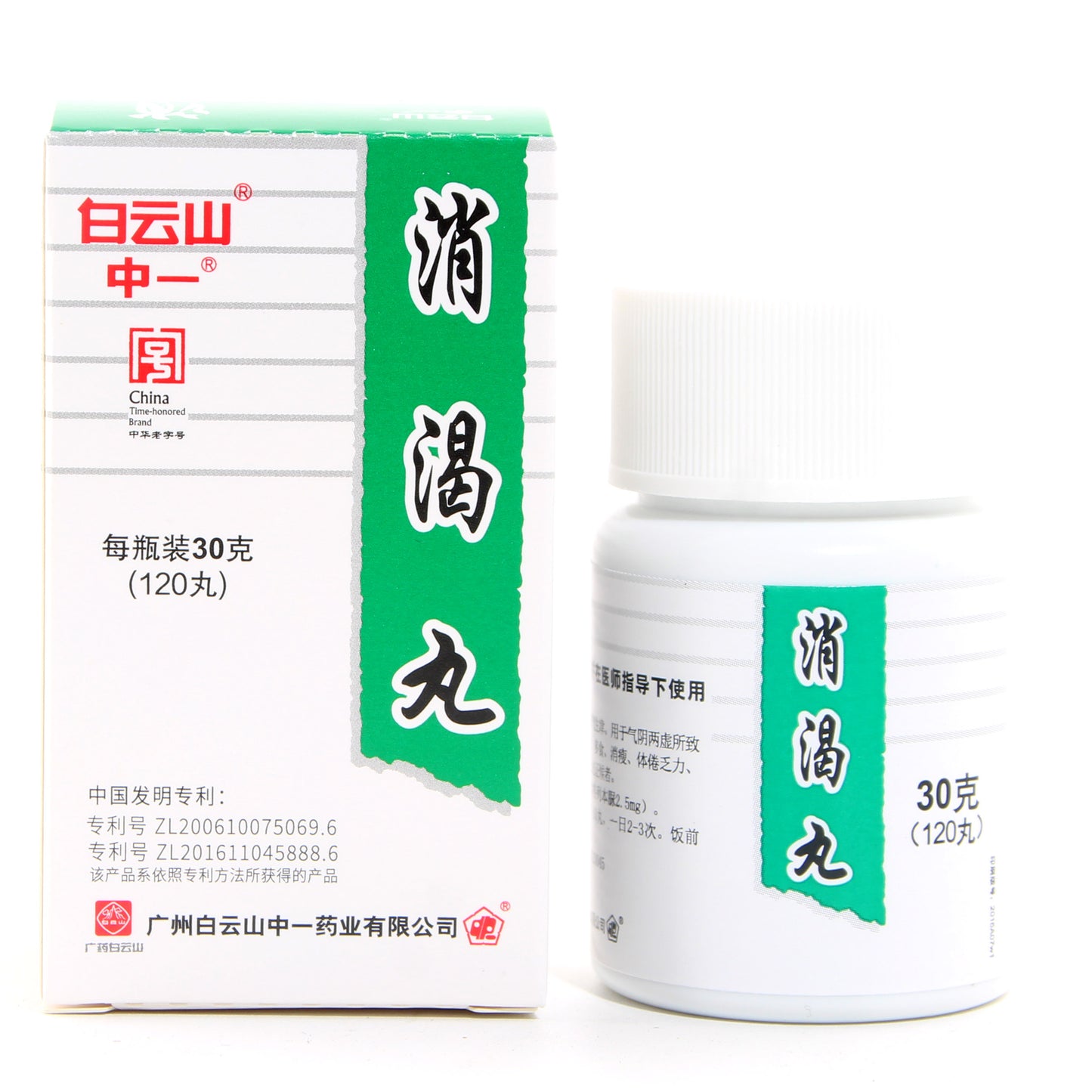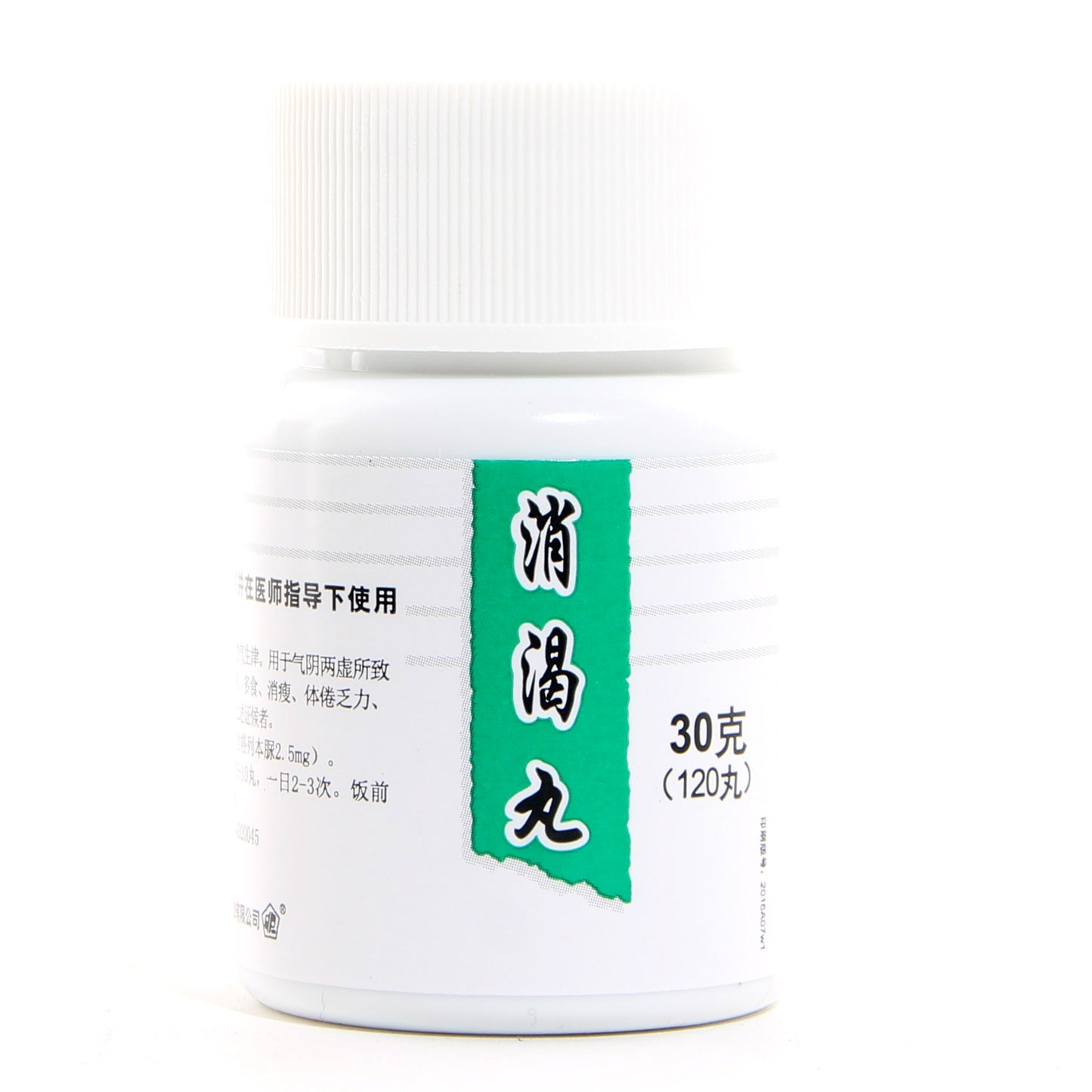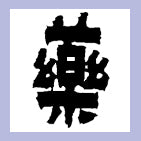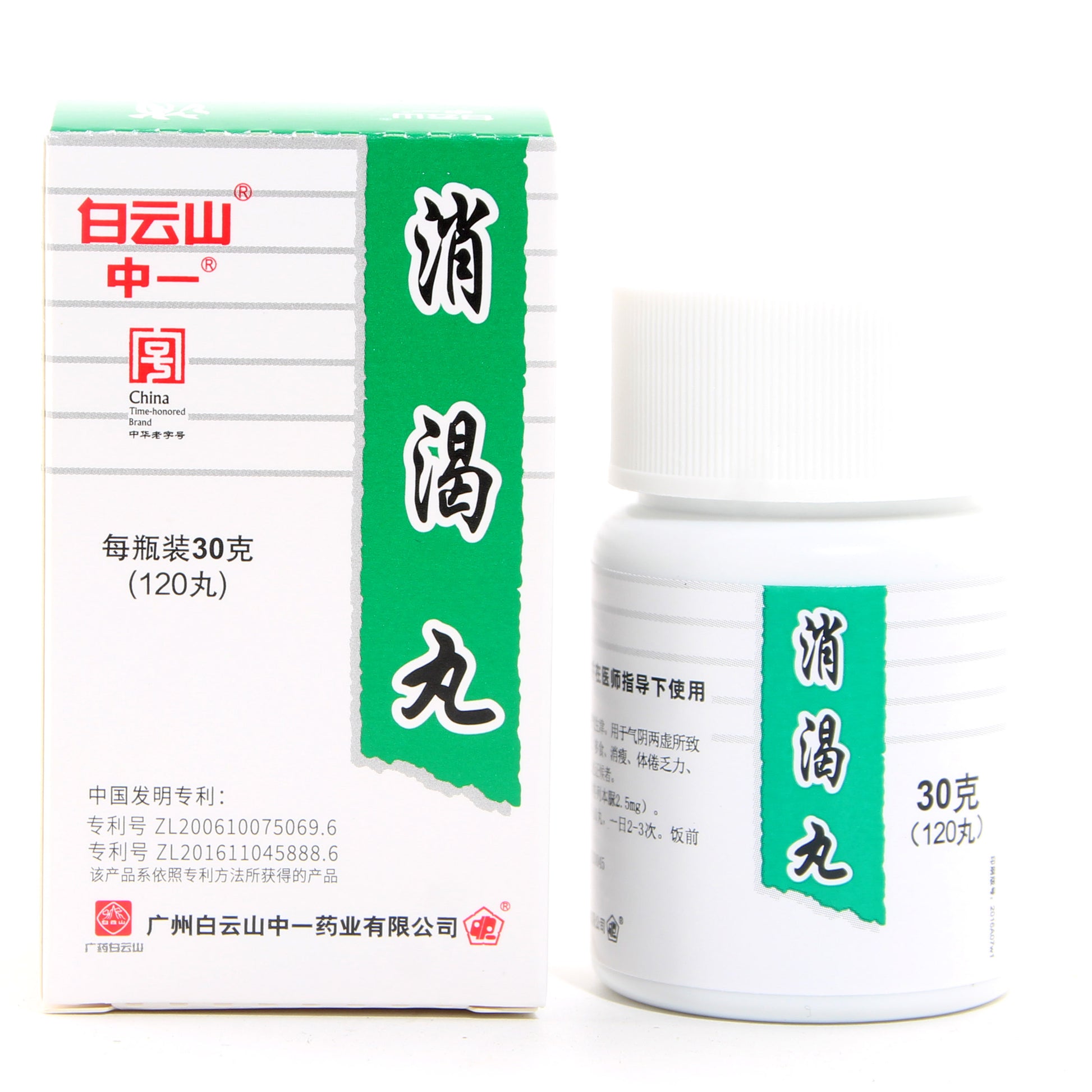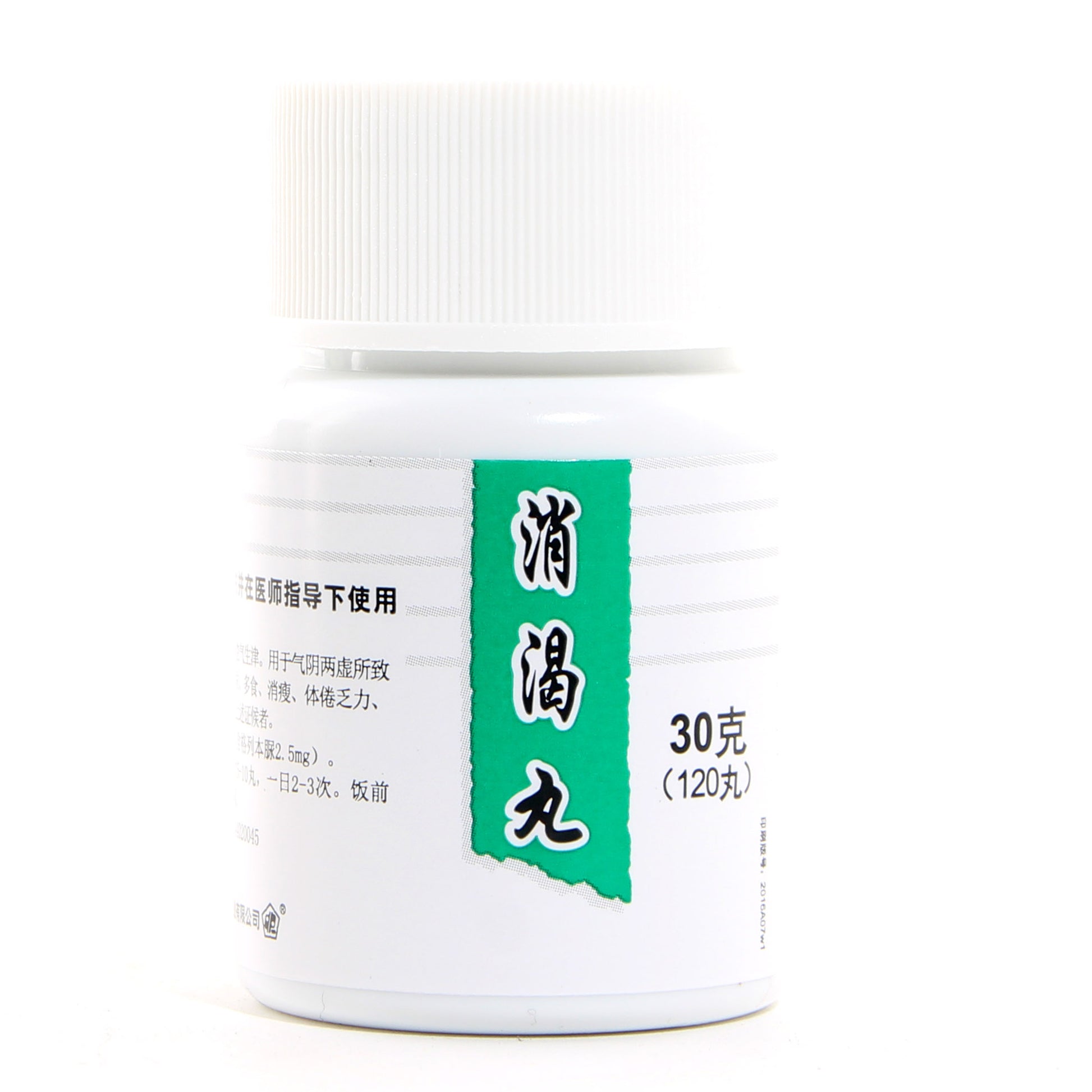Guangzhou Baiyunshan Pharmaceutical Holdings Co., Ltd
消渴丸, Xiaoke Wan, Xiao Ke Wan, 30g (120 pills), for Type 2 Diabetes Mellitus
消渴丸, Xiaoke Wan, Xiao Ke Wan, 30g (120 pills), for Type 2 Diabetes Mellitus
Couldn't load pickup availability
Drug Name
Xiaoke Wan
(Chinese Pinyin: Xiāo Kě Wán)
Ingredients
Pueraria Lobata Root, Rehmannia Glutinosa Root, Astragalus Membranaceus Root, Trichosanthes Kirilowii Root, Stigma Maydis, Schisandra Sphenanthera Fruit, Dioscorea Opposita Rhizome, Glibenclamide.
Description
Black, coated, concentrated water pills; sweet, sour, and slightly astringent in taste.
Actions and Indications
Nourishing kidney yin, replenishing qi, and promoting body fluid production. Used for consumptive thirst (xiao ke) due to qi-yin deficiency, characterized by polydipsia, polyuria, polyphagia, weight loss, fatigue, insomnia, and low back pain; applicable to type 2 diabetes mellitus with the aforementioned syndromes.
Specifications
Each 10 pills weigh 2.5g (containing 2.5mg of glibenclamide).
Dosage and Administration
Oral administration. Take 5-10 pills once, 2-3 times daily. Administer before meals with warm water, or follow physician's instructions.
Adverse Reactions
Reported in literature:
- Hypoglycemic reactions, often triggered by delayed meals, strenuous physical activity, excessive dosage, or concurrent use of drugs that increase hypoglycemia risk (see [Precautions]). Hypoglycemia can usually be relieved by ingesting food or sugar water. In patients with hepato/renal insufficiency, elderly, or debilitated individuals, standard adult doses may cause severe hypoglycemia.
- Rare skin rashes.
- Mild nausea or vomiting (gastrointestinal reactions).
- Rare alopecia.
Contraindications
- Pregnant or lactating women.
- Type 1 diabetes mellitus; type 2 diabetes with ketoacidosis, coma, severe burns, infections, major trauma, or major surgery.
- Hepato/renal insufficiency, hypersensitivity to sulfonamides, or leukopenia.
Precautions
Contains glibenclamide. Use strictly as prescribed and monitor blood glucose.
This is a Chinese-Western medicine combination. No clinical data confirm reduction or elimination of glibenclamide-related adverse reactions by this formulation. Key precautions:
- Start at 5 pills per dose, titrate gradually. Do not exceed 10 pills per dose or 30 pills daily. Once symptoms improve, reduce dose or frequency to 2 times daily (before breakfast and lunch; avoid dinner dose). Adjust under medical supervision.
- Elderly patients (>65 years) have impaired hypoglycemia tolerance. Monitor closely to avoid hypoglycemia. Their blood glucose targets may be relaxed (fasting <7.8 mmol/L, 2h postprandial <11.1 mmol/L).
- Avoid concurrent use with other sulfonylureas.
- Drugs increasing hypoglycemia risk when co-administered:
- Inhibitors of sulfonylurea urinary excretion (e.g., probenecid, allopurinol for gout).
- Delayers of sulfonylurea metabolism (e.g., alcohol, H₂-receptor antagonists like cimetidine/ranitidine, chloramphenicol, antifungals like miconazole, anticoagulants). Alcohol may cause abdominal pain, nausea, vomiting, flushing (especially with chlorpropamide). Coumarin anticoagulants require dose adjustment.
- Displacers of plasma protein-bound sulfonylureas (e.g., salicylates, fibrates).
- Drugs with intrinsic hypoglycemic effects (e.g., alcohol, salicylates, guanethidine, MAOIs, quinidine).
- Other hypoglycemic agents (e.g., insulin, metformin, acarbose, insulin sensitizers).
- β-blockers may mask hypoglycemia symptoms and impair glycogenolysis.
- Drugs increasing hyperglycemia risk when co-administered:
- Glucocorticoids, estrogens, thiazide diuretics, phenytoin, rifampicin.
- β-blockers may antagonize sulfonylurea-induced insulin secretion, causing hyperglycemia.
- Regularly monitor blood/urine glucose, ketones, proteins, liver/renal function, and blood counts. Conduct ophthalmic examinations.
- Use with caution in debilitated patients, fever, nausea/vomiting, adrenal insufficiency, or hypopituitarism.
- Hypoglycemia management:
- Glucose supplementation: Mild cases → oral glucose/sweet juice/sugar water; severe cases → IV glucose. Monitor until consciousness restored.
- Glucagon therapy: Subcutaneous/intramuscular/IV glucagon. Post-injection, supplement with glucose/food and continue observation to prevent recurrence.
Pharmacokinetics
Human pharmacokinetic studies show glibenclamide plasma concentrations rise 30 minutes post-administration, peaking at 2-3 hours.
Storage
Store in airtight containers.
Packaging
Plastic bottles, 30g (120 pills) per bottle, 1 bottle per box.
Expiration
36 months.
If you are seeking additional discounts or have an interest in purchasing other Chinese medications, please feel free to contact us at any time. We are fully dedicated to offering you comprehensive services tailored to your individual needs.
Share

